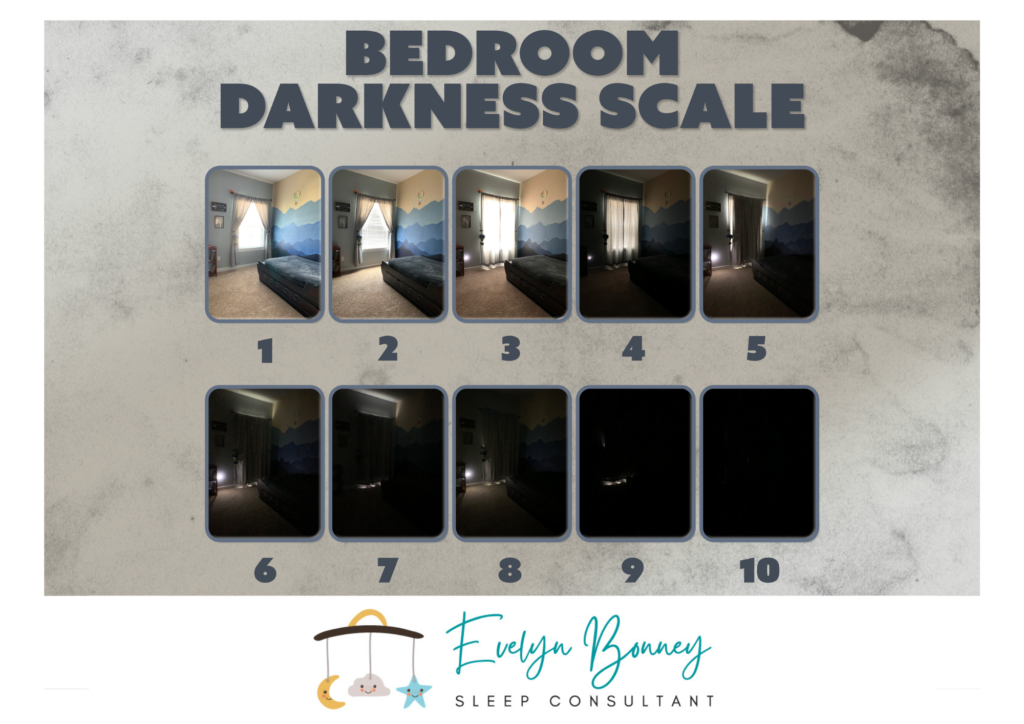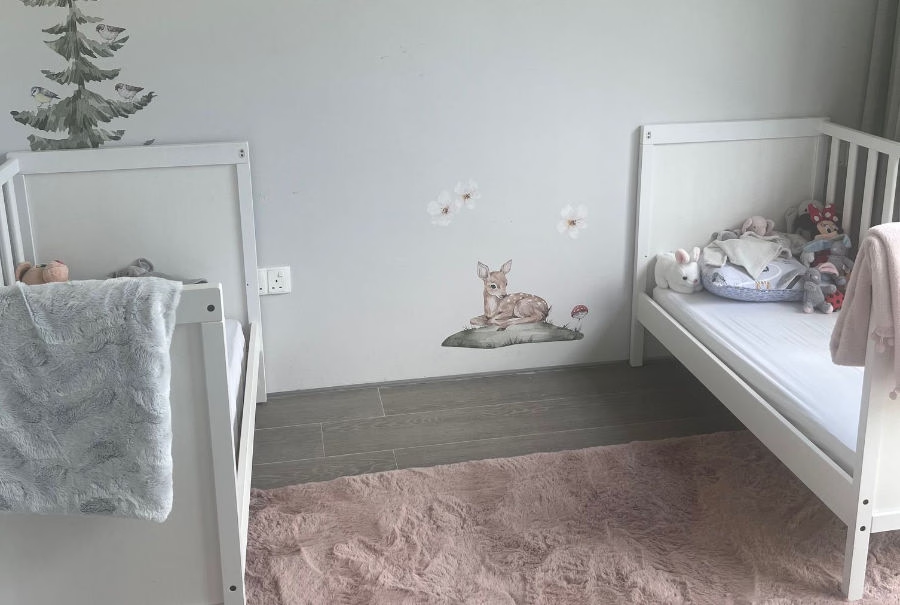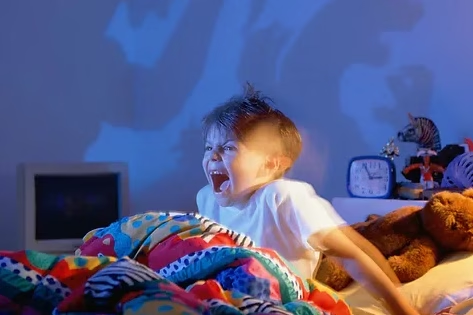The Importance of a Dark Room for Your Child’s Sleep
As a paediatric sleep consultant, one of the most common recommendations I make to parents is to create a dark sleep environment for their children. That being said, I am not super strict on children’s bedrooms being completely pitch black. However, whether it’s naptime or bedtime, the lighting in your little ones room plays a crucial role in promoting healthy, restorative sleep.
The Science of Sleep: Why Darkness Matters
Our bodies have a built-in internal clock known as the circadian rhythm, which helps regulate our sleep-wake cycle. This rhythm is heavily influenced by light and darkness. When exposed to light, especially blue light from screens or daylight, the body signals our brains to stay awake and alert. Conversely, when it becomes dark, the body prepares for sleep. For babies and young children, whose sleep cycles are still developing, consistent exposure to darkness during sleep times can be really useful because darkness cues the brain to produce more melatonin.

An ideal environment to promote great sleep for children is a 6 or above on this bedroom darkness scale.
What is Melatonin?
Melatonin is a hormone naturally produced by the pineal gland in the brain. It plays a significant role in helping the body transition from wakefulness to sleep. Melatonin levels typically rise in the evening when the environment is dark, signalling to the body that it’s time to wind down and prepare for rest. In contrast, exposure to light suppresses melatonin production, making it harder for children to fall asleep and stay asleep.
The Role of Melatonin in Children’s Sleep
- Fall Asleep Faster: When melatonin levels increase, children tend to fall asleep more quickly.
- Sleep Longer: Higher melatonin levels help children stay asleep longer, leading to more restorative sleep cycles.
- Regulates Naps: Daytime melatonin production can be influenced by light, making a dark room essential even during naps.
A well-regulated sleep cycle supported by optimal melatonin production is essential for a child’s growth, development, and emotional well-being.
Creating a Sleep-Friendly Environment
A child’s sleep environment is as important as their bedtime routine. Here are some practical tips to ensure your child’s room is dark and conducive to sleep:
- Use Blackout Curtains
Invest in blackout curtains to block out natural light during naps and bedtime. This is especially important in Singapore, where daylight hours are long and consistent throughout the year.
- Minimise Night Lights
While a small, dim night light may be necessary for toddlers or children afraid of the dark, ensure it emits a warm, red-toned light, which has less impact on melatonin production than blue or white light.
- Eliminate Screen Time Before Bed
Blue light from tablets, phones, and TVs suppresses melatonin production. Encourage a screen-free wind-down routine at least an hour before bedtime.
- Control Artificial Light
Use dimmers or soft lighting in the evening to signal the transition from wakefulness to sleep. Avoid bright overhead lights close to bedtime.
- Create a Consistent Sleep Schedule
A consistent sleep schedule helps regulate your child’s circadian rhythm, making it easier for their body to respond to environmental cues like darkness.
Benefits of a Dark Room for Sleep
- Improved Sleep Onset: Children fall asleep faster in a dark room.
- Fewer Night Wakings: Reduced light exposure leads to more consolidated sleep.
- Better Daytime Naps: Darkness helps babies and toddlers nap longer, supporting overall sleep health.
- Enhanced Mood and Development: Quality sleep promotes emotional regulation, cognitive development, and physical growth.
Conclusion
Creating a dark sleep environment for your child is a simple yet powerful way to support their sleep health. As a paediatric sleep consultant, I’ve seen first hand how small adjustments like reducing light exposure can lead to significant improvements in a child’s sleep patterns. By ensuring their room is dark, quiet, and calming, you’re setting the stage for better sleep!
Need help with your baby’s sleep? Book a free call with me today for 1 on 1 help and support from a certified paediatric sleep consultant here in Singapore.



